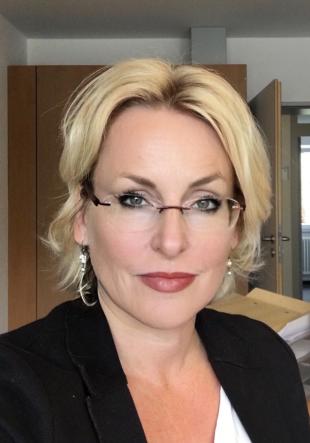TET Student Projects WS 2021/2022
The TET group offers several projects:
- For all projects you should have solid knowledge of Electrodynamics as taught in the "Fields and Waves" course. Also, it will help if you are interested in theoretical modelling and numerical simulations, as e.g. taught in our "Modeling and Simulation" course.
- If you want to do a project you first have to register in PAUL. The course names are independent actual project topic:
- As ET student: L.048.98021 or L.048.28035 for one-semester project, L.048.28509 for a two-semester project
- As ESE student: L.048.98021 or L.048.98035 for one-semester project, L.048.98509 for a two-semester project
- As OE&Ph student: L.128.35100 (one-semester projects only)
- Also, you need to write an e-mail to Mrs. Nina Prante:
- Include your name, student id and 1-3 preferred projects from the list below.
- Projects are done in groups of 2-3 students. If you want to work with someone specific, please let us know.
- If your would be able to do the project in German, please let us know.
- The number of project groups is limited. You will be noticed if and which project you can do.
- For projects based on CST Microwave Studio it is compulsory to attend a one day workshop where the basics are presented. Participants will receive a certificate The workshop will be executed here at the university in room Q2.203 by Dr. Frank Demming-Janssen (SIMUSERV company) and takes place on the 22nd of October, from 10 a.m - 04 p.m..
- There will be no prior meeting on the projects. Please contact the persons listed in the project list or Prof. Dr. Jens Förstner for more information.
Important dates
- Register for course in PAUL: for deadlines see PAUL
- Mail to Ms Prante with project choices:
List of offered projects
| Projekt 1: Optimierung und Simulation einer Quantenpunktphotodiode in CST Microwave Studio | |
| Gruppengröße: | 2-3 |
| Sprache: | Deutsch und englisch |
| Voraussetzungen: | Bachelorveranstaltungen Werkstoffe der Elektrotechnik, Feldtheorie |
| Dauer: | 1-2 Semester |
| Details: | |
| Betreuer: | Dustin Siebert |
| Projekt 2: Design, Optimierung und Analyse eines WILKINSON-Leistungsteilers | |
| Gruppengröße: | 2-3 |
| Sprache: | Deutsch |
| Voraussetzungen: | Lehrstoff der Veranstaltung „Theoretische Elektrotechnik“, erfolgreiche Teilnahme am Trainingskurs „Einführung in CST Studio Suite" |
| Dauer: | 1 Semester |
| Details: | |
| Betreuer: | Dr.-Ing. Denis Sievers |
| Projekt 3: Electromagnetic simulation of the optical response of metal bowtie nanoantennas (using COMSOL Multiphysics) | |
| Gruppengröße: | 2-3 |
| Sprache: | Englisch |
| Voraussetzungen: | Vorkenntnisse im Bereich Elektromagnetische Felder, Matlab oder Octave |
| Dauer: | 1 Semester |
| Details: | |
| Betreuer: | Dr. Viktor Myroshnychenko |
| Projekt 4: Numerische Simulation einer Quantenpunktphotodiode in C++ | |
| Gruppengröße: | 2-3 |
| Sprache: | Deutsch und englisch |
| Voraussetzungen: | Grundlagen der Quantenmechanik, Programmierung, Linux, da Betriebssystem der Workstations und Cluster |
| Dauer: | 1-2 Semester |
| Details: | |
| Betreuer: | Dustin Siebert |
| Projekt 5: Silicon Photonics | |
| Gruppengröße: | 2-3 |
| Sprache: | Deutsch und englisch |
| Voraussetzungen: | Vorkenntnisse in Schaltungstechnik (aus dt. BA-Studiengang) / system and circuit design (aus engl. MA-Studiengang) |
| Dauer: | 1 Semester |
| Details: | |
| Betreuer: | Tobias Schwabe and Henna Farheen |
| Projekt 6: Einfluss der Scannerarchitektur auf die Messung in verschiedenen Frequenzbereichen bis 80 GHz (ISM-Bänder, 5G, Radar) | |
| Gruppengröße: | 2-3 |
| Sprache: | Deutsch und englisch |
| Voraussetzungen: | |
| Dauer: | 1-2 Semester |
| Details: | |
| Betreuer: | Dominik Schröder |
| Projekt 7: Untersuchung des Einflusses von Nahfeldsonden auf die Nahfelder und das Testobjekt in Frequenzbereichen bis 6 GHz | |
| Gruppengröße: | 2-3 |
| Sprache: | Deutsch und englisch |
| Voraussetzungen: | |
| Dauer: | 1-2 Semester |
| Details: | |
| Betreuer: | Dominik Schröder |
Please contact Prof. Dr. Jens Förstner for more information.


